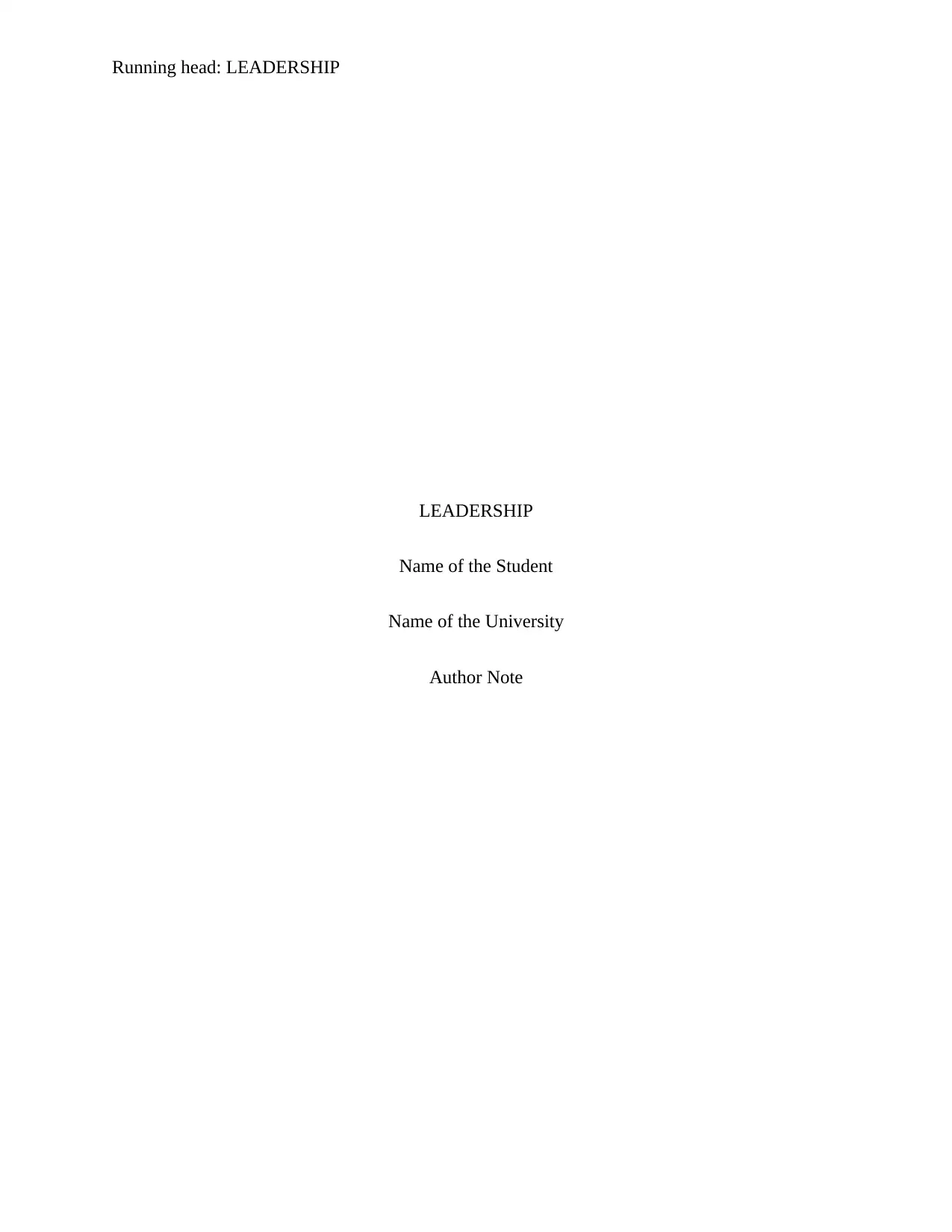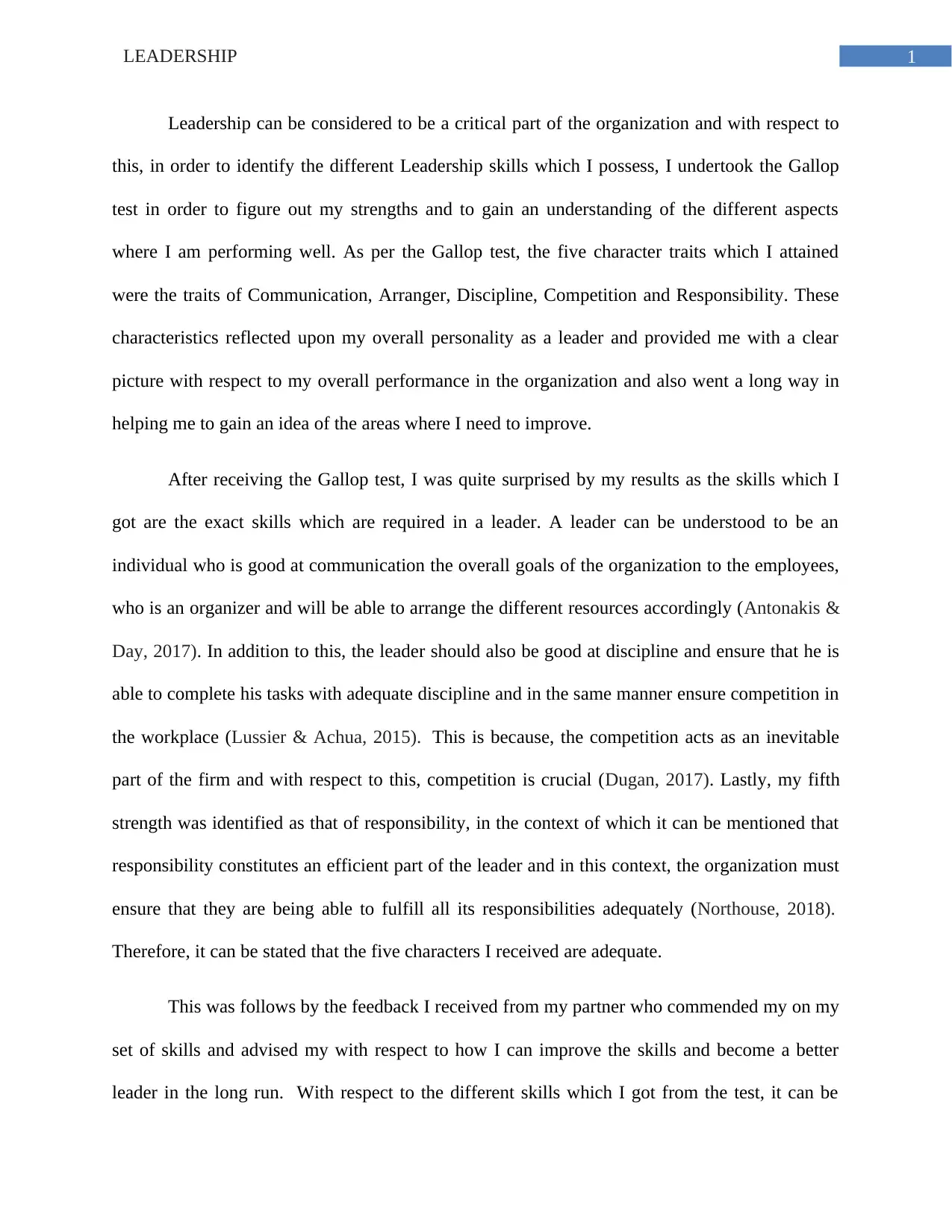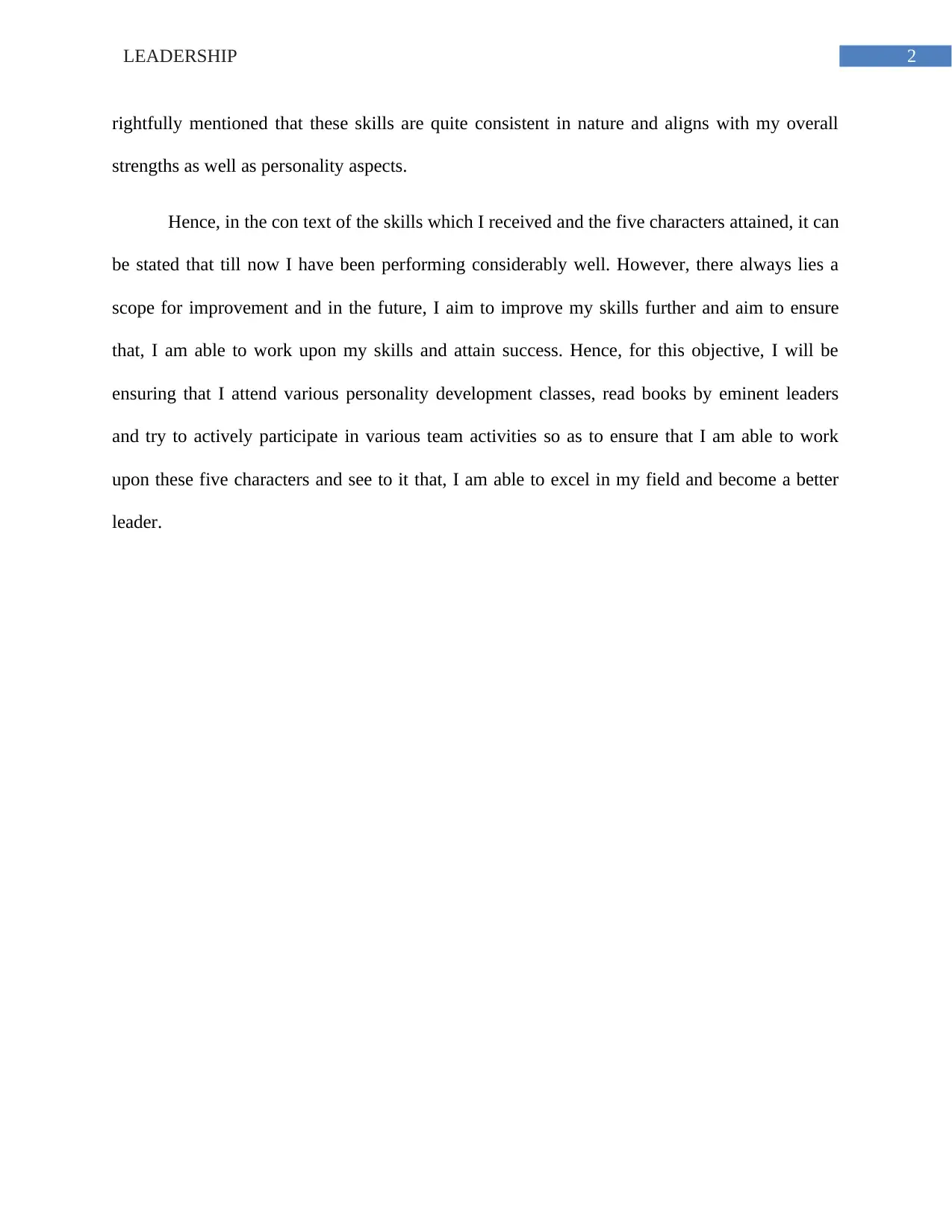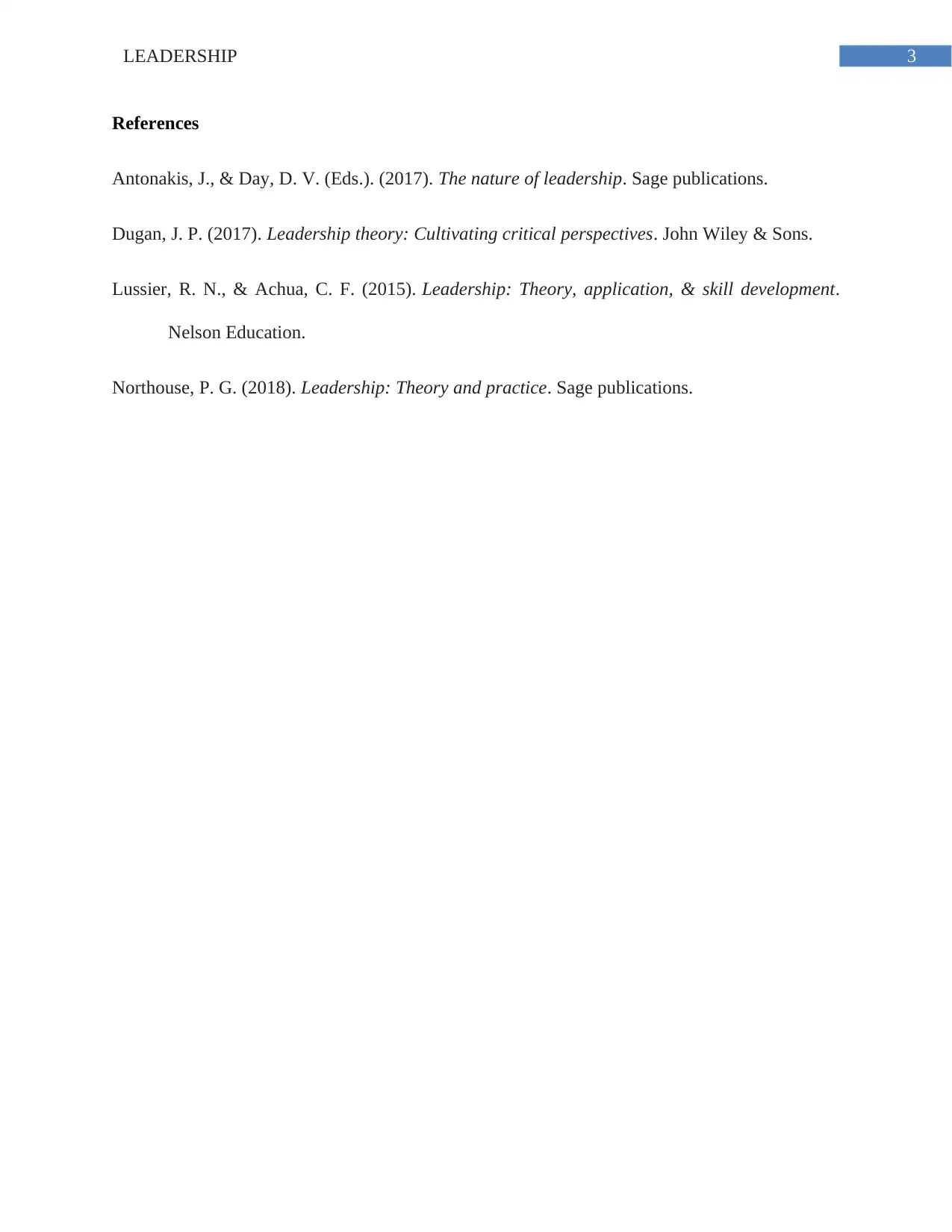MGT601 Dynamic Leadership: Self-Reflective Analysis & Growth
VerifiedAdded on 2023/04/10
|4
|591
|171
Essay
AI Summary
This essay presents a self-reflective analysis of the author's leadership skills based on the Gallup StrengthsFinder assessment. The author identifies Communication, Arranger, Discipline, Competition, and Responsibility as their key strengths and reflects on how these traits align with effective leadership. Feedback from a partner is considered, and the author outlines a plan for continuous improvement through personality development classes, reading leadership books, and active participation in team activities. The goal is to enhance these strengths and become a more effective leader in the future, demonstrating a commitment to ongoing personal and professional development. Desklib provides access to similar solved assignments and past papers for students.
1 out of 4










![[object Object]](/_next/static/media/star-bottom.7253800d.svg)